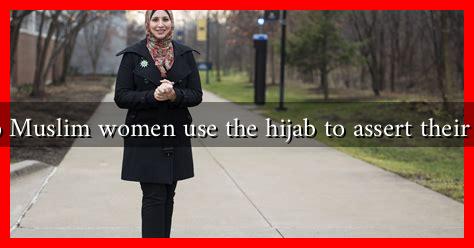-
Table of Contents
How Do Muslim Women Use the Hijab to Assert Their Agency?
The hijab, a traditional headscarf worn by many Muslim women, is often misunderstood and misrepresented in various cultural contexts. While some view it as a symbol of oppression, many Muslim women assert that the hijab is a powerful expression of their identity, autonomy, and agency. This article explores how Muslim women use the hijab to reclaim their narratives, challenge stereotypes, and assert their rights in diverse social landscapes.
The Hijab as a Symbol of Identity
For many Muslim women, the hijab is not merely a piece of clothing but a profound symbol of their faith and identity. Wearing the hijab can serve multiple purposes:
- Religious Obligation: For many, the hijab is a religious requirement that signifies their commitment to Islam.
- Cultural Heritage: The hijab can reflect cultural traditions and familial ties, connecting women to their roots.
- Personal Choice: Many women choose to wear the hijab as an expression of personal autonomy and empowerment.
In a study conducted by the Pew Research Center, it was found that 62% of Muslim women in the U.S. feel that wearing the hijab is a personal choice rather than an obligation. This statistic highlights the agency that many women feel in their decision to wear the hijab.
Challenging Stereotypes and Misconceptions
The hijab often becomes a focal point for discussions about gender and religion, leading to various stereotypes about Muslim women. However, many women use the hijab as a tool to challenge these misconceptions:
- Empowerment through Visibility: By wearing the hijab, women assert their presence in public spaces, challenging the notion that they should be invisible.
- Redefining Feminism: Muslim women are redefining feminism to include their experiences, emphasizing that empowerment can take many forms, including the choice to wear the hijab.
- Activism and Advocacy: Many hijab-wearing women engage in activism, using their visibility to advocate for social justice and equality.
For instance, the #HijabForHijabis campaign on social media has empowered women to share their stories and experiences, fostering a sense of community and solidarity among hijab-wearing women worldwide.
Case Studies: Hijab and Agency in Different Contexts
Examining specific case studies can provide deeper insights into how Muslim women navigate their agency through the hijab:
- France: In France, where the hijab is often a contentious issue, many Muslim women have taken to the streets to protest against bans on religious symbols in schools. Their activism highlights their desire for inclusion and recognition in a secular society.
- United States: In the U.S., Muslim women have increasingly embraced the hijab as a form of cultural expression. Events like the “World Hijab Day” encourage women of all backgrounds to experience wearing the hijab, fostering understanding and solidarity.
- Social Media Influence: Influencers like Amena Khan and Noor Tagouri have used platforms like Instagram and YouTube to showcase their lives as hijab-wearing women, challenging stereotypes and promoting positive representations of Muslim women.
The Intersection of Fashion and Faith
In recent years, the hijab has also found its place in the fashion industry, with designers creating stylish and modern interpretations. This intersection of fashion and faith allows women to express their individuality while adhering to their beliefs:
- Fashion Shows: Events like New York Fashion Week have featured hijab-wearing models, showcasing that modest fashion can be trendy and chic.
- Online Retailers: Brands like Haute Hijab and Modanisa cater specifically to hijab-wearing women, offering a range of fashionable options that empower women to express their style.
Conclusion: The Hijab as a Tool of Empowerment
In conclusion, the hijab serves as a multifaceted symbol for many Muslim women, representing their faith, identity, and agency. By choosing to wear the hijab, women assert their autonomy and challenge societal stereotypes, redefining what it means to be a Muslim woman in contemporary society. As they navigate various cultural landscapes, these women continue to use the hijab as a powerful tool for empowerment, advocacy, and self-expression. Understanding the hijab in this light allows for a more nuanced appreciation of the diverse experiences of Muslim women around the world.
For further reading on this topic, you can explore resources from the Pew Research Center and various academic journals that focus on gender studies and religious practices.

